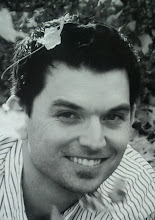In physics, Newtonian force is defined as an influence on a body, producing a change in movement (1). This definition applies to Newton's first law that Every material body remains in its state of rest or uniform, unaccelerated motion in a straight line, if and only if it is not acted upon by a net force (2). The problem with this approach is that this describes linear dynamics only. There are many forces, in many vector directions, being applied to a golfer's body and club during the golf swing. Each of these vectors play a role in the net force being translated into the golf ball. The golf swing is comprised of rotational dynamics, which include additional complicating factors. When rotation is added, torque is introduced. Newton's second law states that a body of mass subject to a net force undergoes an acceleration that has the same direction as the force and a magnitude that is directly proportional to the force and inversely proportional to the mass, i.e., F = ma. Torque, by definition, is the tendency of a force to cause or change rotational motion of a body. Torque depends on the magnitude of the force and on where the force is applied relative to the pivot point. Hence, the rotation axis's location greatly affects the torque produced (3).
So, all of that to say this: If the golfer's muscles are the generator of force and the spine is the axis of rotation, it is counter-productive for the generated force to be moved from the axis's original location. No added power is produced by "loading the right side" because the axis of rotation is deviated causing a loss of rotational muscle tension and decreasing the player's ability to transition to the left in the downswing. This difficulty in transitioning to the left on the downswing has caused the most common "miss" among amateurs to become a slice over the past couple of decades. In years prior, the most common "miss" was a hook. In the professional golfer, the most common "miss" has become a block to the right. This is because the player's timing must be perfect in order to return the club back to the ball consistently. If that timing is interrupted, compensations ensue that cause a plethora of problems (i.e. flipping the hands through impact, over-the-top swing planes, hanging-back through impact, sliding, swaying, etc.).
Also, the injuries that result from this movement are usually seen in the right-sided low back, left hip, left knee, and left shoulder. That is because these areas take high amounts of stress during the swing when the player "loads the right side". Stress on these areas can be decreased if the center of mass is not moved from its original position during the back swing.
Baseball pitchers have figured out this concept. How long will it be before more golf instructors figure it out too?
(notice the amount of "loading the right side" during the wind-up in earlier pitching forms)

(notice pitchers now maintain centered weight distribution during the wind-up, relying on rotation and forward motion to generate power and consistency)

All the best,
Nathan Williams, DC, MS, CGFI-MP2
1. Physics, the Human Adventure: from Copernicus to Einstein and Beyond; Holton, G., Brush, S.; 2005; p. 108
2. Physics, the Human Adventure: from Copernicus to Einstein and Beyond; Holton, G., Brush, S.; 2005; p. 108
3. College Physics: Reasoning and Relationships; Giordano, N.; 2009; p. 249

